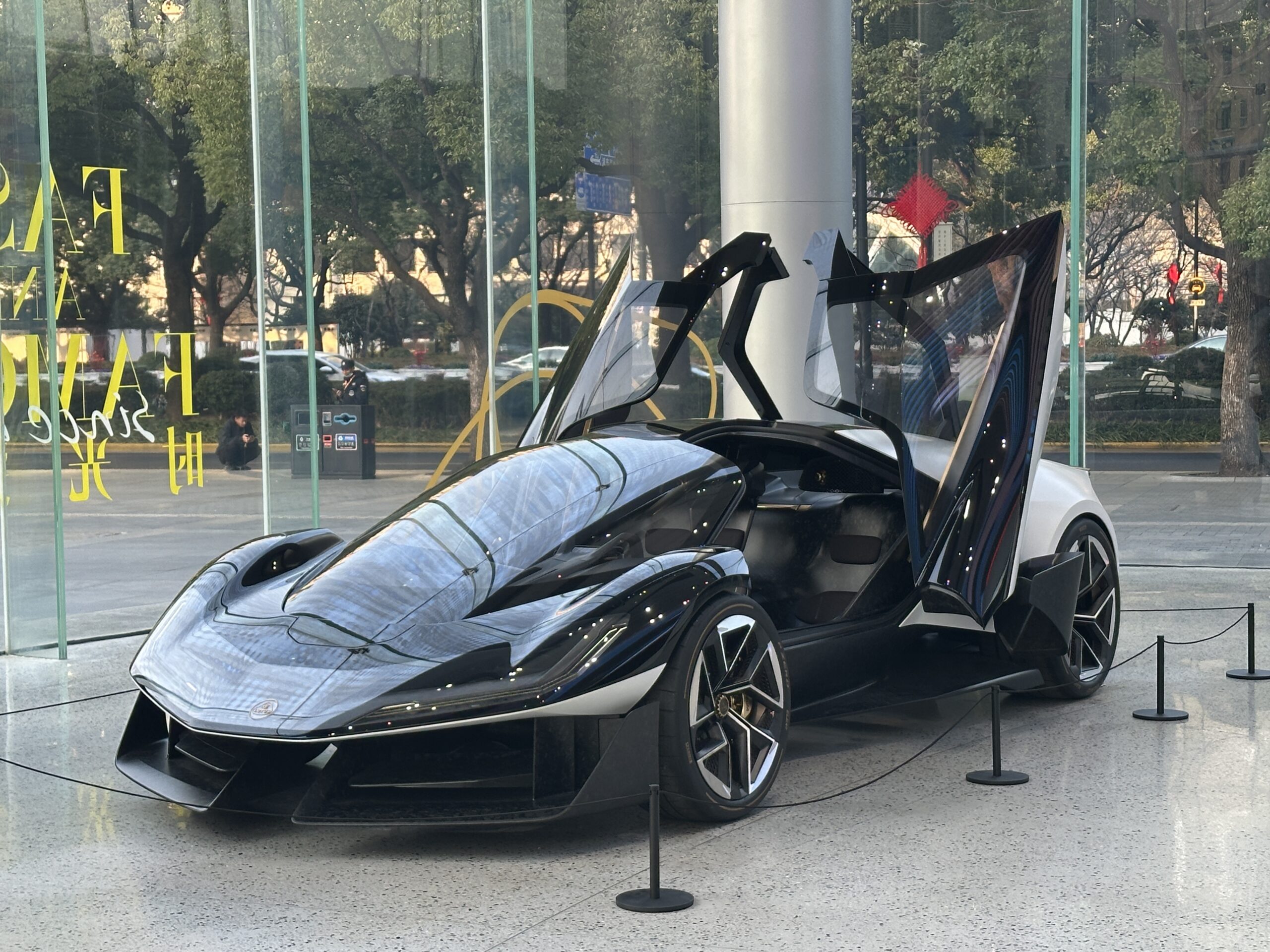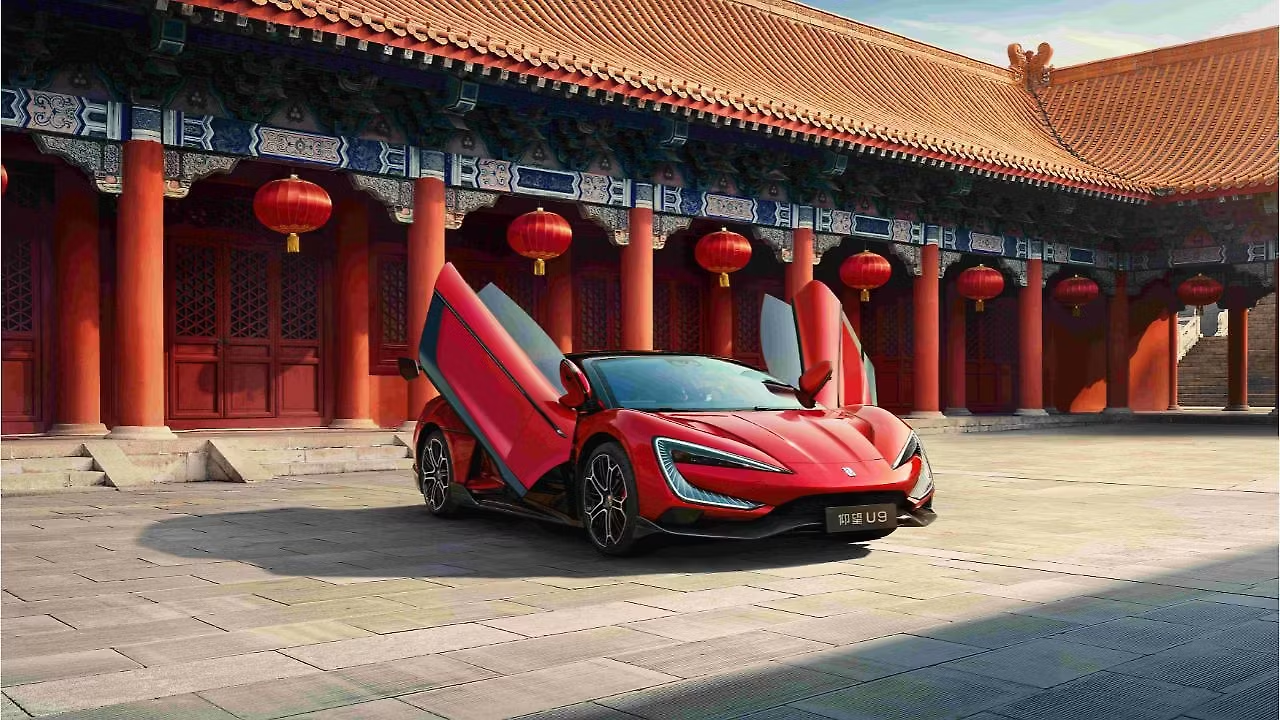The Lotus Theory 1 concept car, unveiled in September 2024, isn’t just a sleek prototype—it’s a bold declaration of where sports car design is headed. With its futuristic aesthetics, cutting-edge technology, and a nod to Lotus’s lightweight legacy, this concept is a tantalizing preview of an electric sports car set to hit the roads by 2027. Imagine a vehicle that pulses to guide your turns, boasts nearly 1,000 horsepower, and wraps it all in a recycled carbon-fiber shell. Intrigued? Let’s dive into what makes the Theory 1 a game-changer.
What Is the Lotus Theory 1?
The Lotus Theory 1 is a fully electric concept car that embodies the brand’s new design philosophy, dubbed “The Lotus Theory.” It’s a three-seater with a central driving position, 987 horsepower, and a lightweight build targeting under 3,500 pounds. Unveiled to showcase Lotus’s vision for intelligent performance vehicles, it blends digital innovation, natural ergonomics, and analog driving thrills.
A Design Manifesto for the Future
Lotus calls the Theory 1 its “design manifesto,” built on three pillars: Digital, Natural, and Analogue. These principles fuse advanced technology, driver-focused ergonomics, and raw performance to redefine what a sports car can be. Think of it as a love letter to enthusiasts who crave both cutting-edge tech and the soul of driving.
The Evolution of Lotus’s Design Philosophy
Lotus has always been about lightweight, nimble sports cars—think of the iconic Elise or the legendary Esprit. The Theory 1 takes that heritage and catapults it into the electric era. Drawing inspiration from classics like the Type 72 Formula 1 car and the Eleven endurance racer, it’s a bridge between Lotus’s storied past and its electrified future.
Why Lightweight Matters
The Theory 1’s carbon-fiber construction and minimalist approach—using just 10 A-surface materials compared to the industry’s typical 100—keep weight down. This obsession with lightweight design ensures agility and efficiency, hallmarks of Lotus’s DNA. It’s like packing for a weekend trip with only a carry-on: less baggage, more freedom.
Key Features of the Lotus Theory 1
The Theory 1 isn’t just about looks—it’s packed with innovations that could shape Lotus’s production models. Here’s what stands out:
- Central Driving Position: Inspired by the McLaren F1, the driver sits in the middle, flanked by two passenger seats, for optimal weight distribution and an immersive experience.
- Lotuswear Technology: Soft robotic seats and steering wheel, developed with MotorSkins, use haptic feedback to guide drivers with pulses—like a gentle nudge to turn left.
- Active Aerodynamics: Features like a contoured underfloor, NACA ducts, and a rear diffuser maximize efficiency and performance.
- 987 Horsepower: Dual electric motors and a 70-kWh battery deliver blistering power with an estimated 250-mile range.
- Sustainable Materials: Recycled carbon fiber, aluminum, and polyester keep the environmental footprint low.
Lotuswear: A New Way to Drive
Picture this: you’re carving through a mountain pass, and your seat pulses on the left, subtly guiding you into the next corner. That’s Lotuswear, a system that uses inflatable pods in the seats and steering wheel to communicate with the driver. It’s like having a co-driver who speaks through touch, making every drive feel alive.
Performance and Powertrain Breakdown
The Theory 1 is no slouch. Its dual electric motors churn out 987 horsepower, propelling it to a targeted weight of under 3,500 pounds. The 70-kWh battery offers a respectable 250-mile range, and Pirelli P Zero Elect tires ensure grip with low rolling resistance. It’s a beast that’s as eco-conscious as it is exhilarating.
How It Compares to Competitors
To put the Theory 1 in context, let’s compare it to other electric sports cars:
| Feature | Lotus Theory 1 | Porsche Taycan Turbo S | Tesla Model S Plaid |
|---|---|---|---|
| Horsepower | 987 hp | 750 hp | 1,020 hp |
| Weight | <3,500 lbs (targeted) | 5,070 lbs | 4,766 lbs |
| Range | ~250 miles | 278 miles | 396 miles |
| Seating Layout | 3 (central driver) | 4 | 5 |
| Unique Feature | Lotuswear haptic feedback | Adaptive air suspension | Yoke steering |
The Theory 1’s lightweight build and central seating give it an edge in agility, though its range lags behind the Tesla.
Pros and Cons of the Theory 1
Pros:
- Innovative Lotuswear technology enhances driver connection.
- Lightweight design promises razor-sharp handling.
- Sustainable materials align with modern eco-conscious values.
- Central driving position offers a unique, F1-inspired experience.
Cons:
- 250-mile range is modest compared to competitors.
- Concept status means production uncertainties.
- Three-seater layout may limit practicality for some buyers.
The Technology Behind the Theory 1
The Theory 1 is a tech lover’s dream. Built on the Nvidia Drive platform, it supports advanced digitalization with trillions of operations per second. Features like steer-by-wire, carbon-ceramic brakes from AP Racing, and a reactive textile dashboard with on-demand buttons scream futuristic sophistication.
Active Aerodynamics and Efficiency
The Theory 1’s aero package is a masterclass in form meeting function. A contoured underfloor with NACA ducts feeds air to the cooling system, while side pods and a rear diffuser optimize airflow. It’s like the car is slicing through the air with surgical precision, boosting both performance and efficiency.
Lotus’s Electric Future
Lotus is all-in on electrification, aiming for a fully electric lineup by 2028. The Theory 1 is a precursor to the Type 135, an electric sports car expected in 2027, built on the Lightweight Electric Vehicle Architecture (LEVA). Before that, the Lotus Eletre SUV (2025) and Emeya sedan will hit the market, setting the stage for the Theory 1’s influence.
Where to Learn More About Lotus’s Plans
Curious about Lotus’s electrified lineup? Visit Lotus Cars for official updates on the Theory 1, Eletre, and Emeya. For deeper insights into their design philosophy, Dezeen offers detailed coverage of the Theory 1’s unveiling.
People Also Ask (PAA)
Here are real questions from Google about the Lotus Theory 1, answered concisely:
What is the Lotus Theory 1 concept car?
It’s an electric sports car concept with 987 hp, a central driving position, and Lotuswear haptic feedback, previewing Lotus’s future design direction.
When will the Lotus Theory 1 be available?
The Theory 1 is a concept, but elements will likely appear in the Type 135, slated for 2027. No production date is confirmed.
How much horsepower does the Lotus Theory 1 have?
It boasts 987 horsepower from dual electric motors, paired with a 70-kWh battery.
What is Lotuswear technology?
Lotuswear uses soft robotic seats and steering to provide haptic feedback, guiding drivers through pulses for a more immersive experience.
Why the Theory 1 Matters to Car Enthusiasts
As someone who’s spent countless hours drooling over car magazines and track days, I can tell you the Theory 1 feels like a love letter to gearheads. My first car was a beat-up Lotus Elise, and driving it felt like an extension of my body—light, responsive, pure. The Theory 1 promises that same connection but with an electric twist. Its central driving position reminds me of watching Ayrton Senna dominate in a McLaren, and the haptic feedback? It’s like the car’s whispering secrets to you mid-corner. For enthusiasts, this concept isn’t just a car—it’s a vision of what’s possible when innovation meets passion.
Sustainability Without Sacrificing Soul
Lotus’s use of recycled materials like carbon fiber and polyester is a nod to a greener future without losing the thrill of driving. It’s refreshing to see a brand that doesn’t just slap an electric motor on a heavy chassis and call it a day. The Theory 1’s minimalist material approach—10 A-surface materials versus the usual 100—shows you can be eco-friendly and still build a car that makes your heart race.
How to Stay Updated on the Theory 1
Want to follow the Theory 1’s journey from concept to reality? Here’s how:
- Official Lotus Website: Check www.lotuscars.com for news on the Type 135 and other electric models.
- Automotive News Outlets: Sites like Green Car Reports and Motor Authority provide detailed coverage.
- Social Media: Follow Lotus on platforms like X for real-time updates and behind-the-scenes content.
- Car Shows and Events: Lotus often showcases concepts at major auto shows—keep an eye on events like the Geneva Motor Show.
FAQ: Your Questions Answered
Q: Is the Lotus Theory 1 going into production?
A: The Theory 1 is a concept, but its design and tech will influence the Type 135, expected in 2027. No production version is confirmed yet.
Q: How does the Theory 1 compare to the Lotus Emira?
A: The Theory 1 is a fully electric concept with 987 hp and a central driving position, while the Emira is a gas-powered sports car with up to 400 hp. The Theory 1 previews a more futuristic, tech-heavy direction.
Q: What makes Lotuswear unique?
A: Lotuswear uses soft robotic seats and steering to deliver haptic feedback, like pulses to guide turns, creating a more connected driving experience.
Q: Where can I buy a Lotus electric sports car?
A: The Type 135, inspired by the Theory 1, isn’t available yet. Check Lotus Cars for updates on future releases.
Q: How eco-friendly is the Theory 1?
A: It uses recycled carbon fiber, aluminum, and polyester, with a minimalist material approach to reduce environmental impact.
The Road Ahead for Lotus
The Lotus Theory 1 isn’t just a concept car—it’s a promise. A promise that electric sports cars can be thrilling, lightweight, and sustainable. As Lotus gears up for its all-electric future by 2028, the Theory 1 sets the tone for what’s to come: cars that don’t just drive but connect with you on a visceral level. Whether you’re a die-hard Lotus fan or just someone who loves the idea of a car that pulses with life, the Theory 1 is a glimpse into a future worth getting excited about. So, buckle up (in the center seat, of course) and keep an eye on Lotus—they’re redefining what it means to drive.



